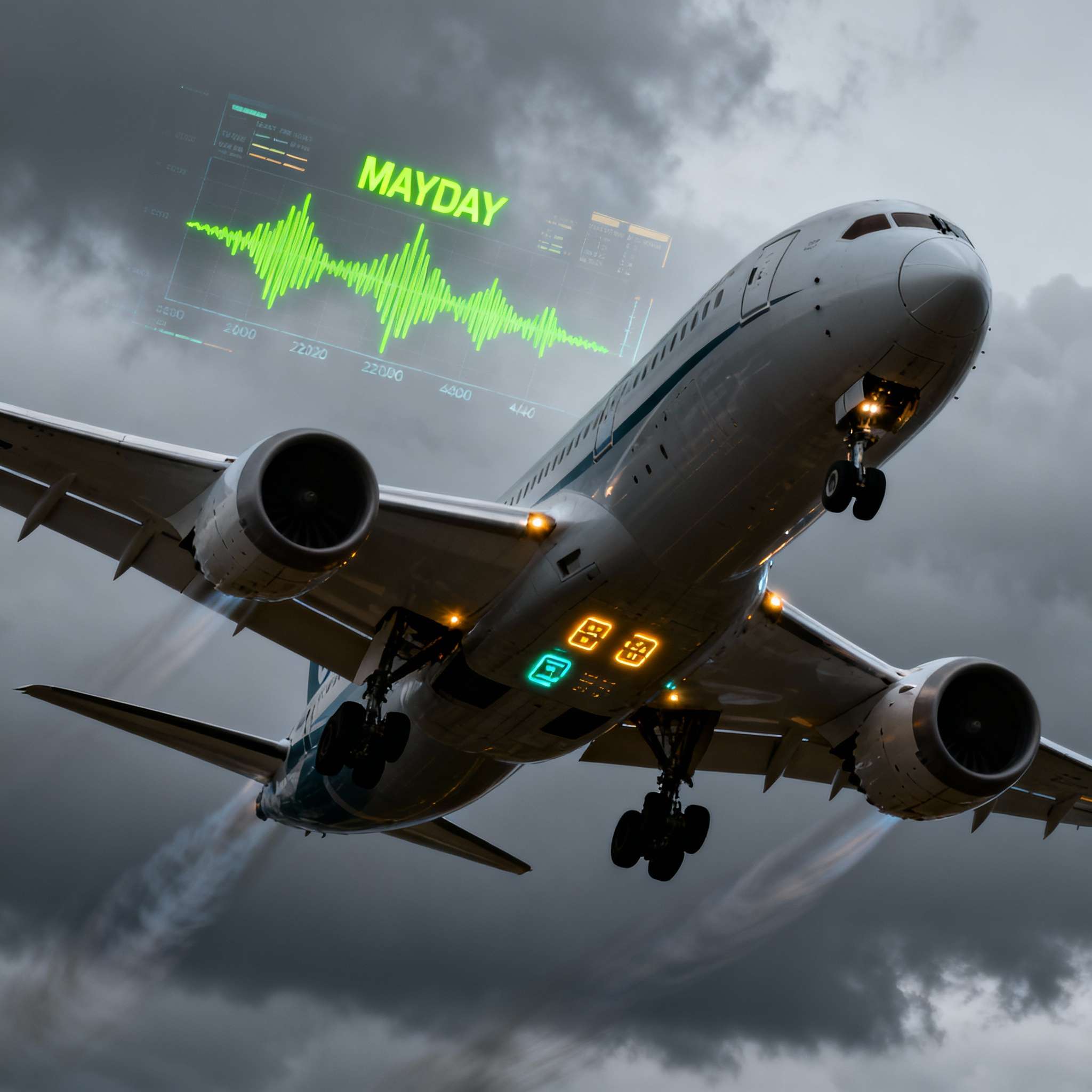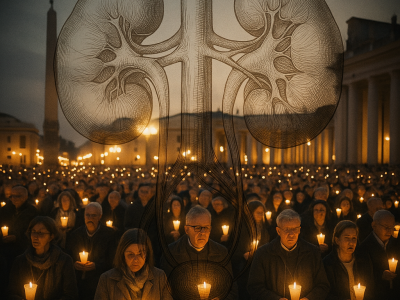On a humid Thursday afternoon in Ahmedabad, India passengers boarded Air India flight AI171 expecting a routine journey to London Gatwick. The Boeing 787 Dreamliner, a marvel of modern aviation technology, was meant to represent safety and efficiency. Less than two minutes after takeoff, it nose-dived into a residential hostel near B.J. Medical College, exploding on impact.
Of the 242 people onboard, only one survived. The incident is India’s deadliest aviation tragedy in over a decade and the first fatal crash involving a Boeing 787 since its launch. But behind the flames and headlines lies a deeper question: how could one of the world’s most advanced aircraft fail so catastrophically?
The final ninety seconds
Shortly after takeoff at 1:38 PM on 12 June 2025, the aircraft reached an altitude of approximately 650 feet. Moments later, a MAYDAY signal was issued. The plane spiralled downward and crashed just under a kilometre from the runway.
Only one person survived, Vishwash Kumar Ramesh, a British student. Seated near an emergency exit, he was thrown from the fuselage as it split on impact. He sustained multiple fractures but remained conscious, offering the first eyewitness account from inside the aircraft.
His testimony, combined with flight data, has become pivotal to the investigation.
Dreamliner’s promise and peril
The Boeing 787 Dreamliner was hailed as a revolution when it entered service in 2011. It featured lightweight composite materials, electronically dimming windows, and fly-by-wire controls. The aircraft was designed to be 20% more fuel-efficient than its predecessors while maintaining high safety standards.
The Dreamliner involved in this crash had completed over 11,000 flight cycles. Preliminary technical inspections revealed no signs of explosion or mid-air fire. Instead, suspicion now centres on its takeoff configuration, especially the premature retraction of flaps, which help generate lift.
When flaps retract too early or at incorrect speeds, lift is reduced dramatically, risking a stall. This issue has been implicated in several past accidents, including Turkish Airlines Flight 1951 in 2009. In modern aircraft, automated safeguards should prevent this. However, if sensors provide erroneous readings or if pilots override alerts, disaster can still unfold.
The role of humans in a machine’s world
Aircraft automation has increased safety, but it has also introduced new vulnerabilities. In high-stakes environments, the interface between human and machine often determines outcomes. A 2024 review study titled Understanding the human factors challenge of handover between levels of automation for uncrewed air systems: a systematic literature review published in Transportation Planning and Technology found the inconvenience associated with the automation.
Today’s pilots manage systems rather than manually flying the aircraft at all times. This shift can be problematic in emergencies that require rapid disengagement from autopilot. Cognitive overload, delayed recognition of warnings, or over-reliance on automation may explain some crew decisions on AI171.
Ongoing analysis of the cockpit voice recorder and flight data recorder will help clarify whether the flight crew misinterpreted data, reacted too slowly, or failed to respond appropriately to stall warnings.
At the same time, Ambroise Paré, a military surgeon, transformed battlefield surgery. His replacement of hot iron cauterisation with ligatures to control bleeding significantly reduced pain and mortality. His innovations were born out of necessity but went on to influence all areas of surgery, including ENT.
These developments show how societal forces such as war and empire often drove medical progress. ENT surgery was no exception. The demand for effective treatment of soldiers and civilians pushed physicians to rethink both technique and compassion.
The crash investigation
Behind every crash is a forensic investigation involving engineers, data scientists, and psychologists. India’s Aircraft Accident Investigation Bureau (AAIB) is collaborating with international agencies, including the US National Transportation Safety Board and the UK Air Accidents Investigation Branch.
The recovered black boxes contain more than 2,000 parameters per second, recording variables such as throttle position, flap angle, and autopilot mode. These datasets help build a second-by-second reconstruction of the flight, similar to what resolved the 2009 crash of Air France Flight 447, where sensor icing triggered cascading errors.
Boeing’s checkered legacy
Although the 787 had an unblemished safety record until now, Boeing’s reputation has been under fire since the 737 MAX disasters. Investigations into those crashes revealed deep-rooted issues in Boeing’s production culture, including rushed software development and downplayed safety risks.
Multiple whistle-blower reports and a 2023 New York Times exposé identified systemic quality control lapses at Boeing’s North Charleston plant, where many Dreamliners are assembled. While there is no direct evidence linking AI171’s crash to manufacturing defects, the broader narrative of Boeing’s oversight failures lingers.
Analysts fear that even minor technical glitches, when paired with automation errors, can result in devastating outcomes.
Predictive AI and aviation safety
The aviation sector has begun integrating predictive AI models to prevent future disasters. These models can analyse massive flight datasets to anticipate conditions that could lead to stall, engine failure, or miscommunication between human and machine.
A recent study by the University of Cambridge demonstrated that AI algorithms trained on thousands of near-miss events were able to forecast risk scenarios with 86% accuracy. This represents a promising tool for real-time cockpit alerts or pre-flight diagnostics.
However, AI is only as reliable as the data it receives. Inconsistent sensor calibration, faulty inputs, or lack of pilot interpretability can still override these safeguards.
The Air India crash could therefore accelerate the rollout of AI-assisted decision-making tools, but with more robust human oversight embedded.
Climate, turbulence and mechanical strain
As global temperatures rise, aviation faces new challenges. Warmer air reduces lift, requiring higher takeoff speeds and longer runways. According to researchers at the University of Reading, increased clear-air turbulence and thermal uplift due to climate change may lead to more mid-flight instability and stress on aircraft structures.
Though not yet cited in the AI171 investigation, the impact of ambient conditions, especially at hot-weather airports like Ahmedabad, cannot be dismissed. The crash raises a timely question: are older aircraft models being sufficiently tested under intensifying climate extremes?
This has led to renewed calls for updated aircraft certification protocols under projected 2050 climate scenarios.
The aftermath: Regulation and reflection
India’s Directorate General of Civil Aviation has ordered full technical audits of all Boeing 787 aircraft operating in Indian airspace. This includes flap systems, gear sensors, and flight software. The European Union Aviation Safety Agency (EASA) and US Federal Aviation Administration (FAA) are also revisiting their inspection guidelines.
Air India has retired flight number AI171 and promised financial compensation to families. The Tata Group, owner of the airline, is working with victim advocacy groups and aviation researchers to fund independent safety audits.
Calls are growing for a global summit on human-machine coordination in aviation. The International Civil Aviation Organization (ICAO) is currently reviewing proposals to include human-centred automation modules in pilot training standards.
What we must ask next
Are we teaching pilots to understand the why behind their instruments, or merely the how? Is aviation regulation adapting quickly enough to match AI’s pace of development? And what happens when business incentives outpace safety standards?
These are not abstract questions. They go to the heart of every flight we board and every system we trust. The answers may shape the next generation of aviation.
References
Grindley, B., Parnell, K. J., Cherett, T., Scanlan, J., & Plant, K. L. (2024). Understanding the human factors challenge of handover between levels of automation for uncrewed air systems: a systematic literature review. Transportation Planning and Technology, 1-26. https://doi.org/10.1080/03081060.2024.2375645







